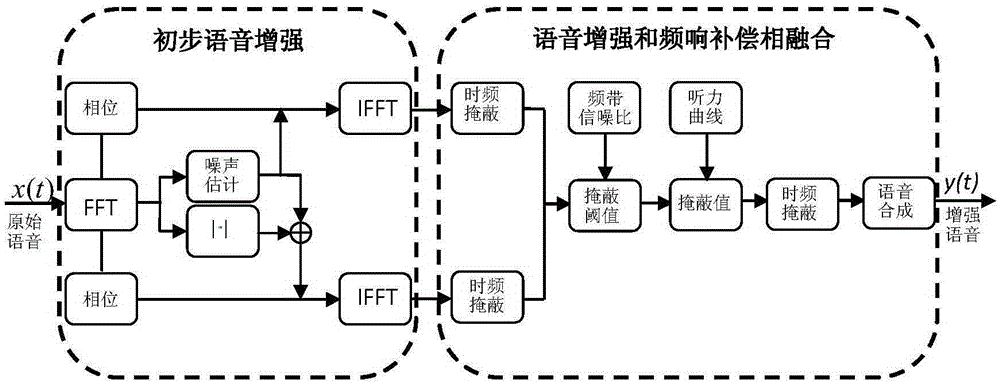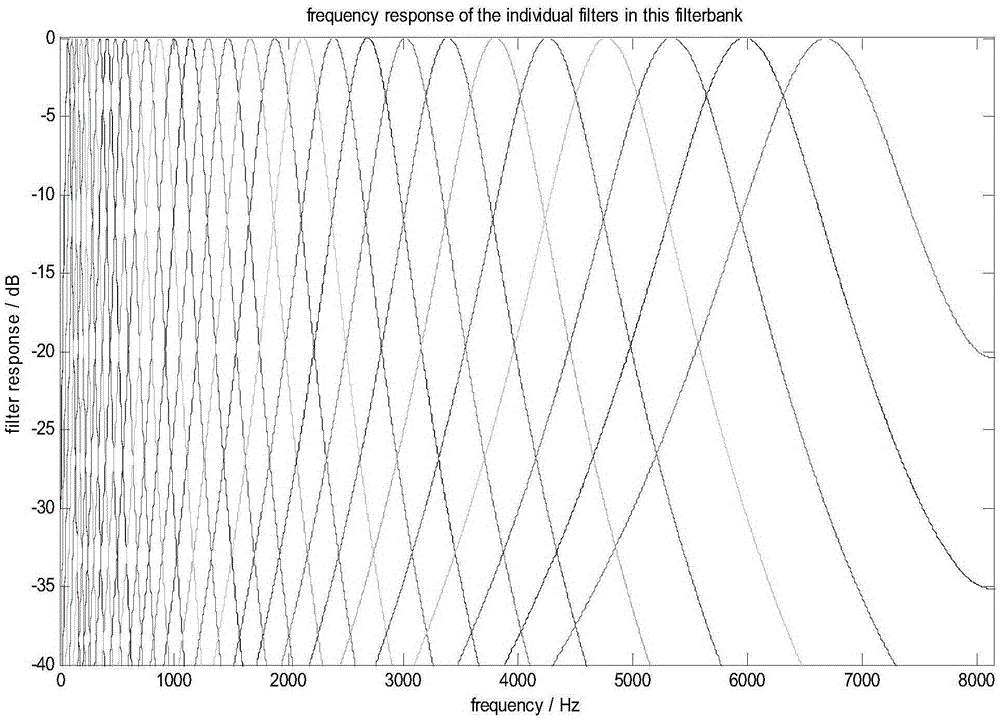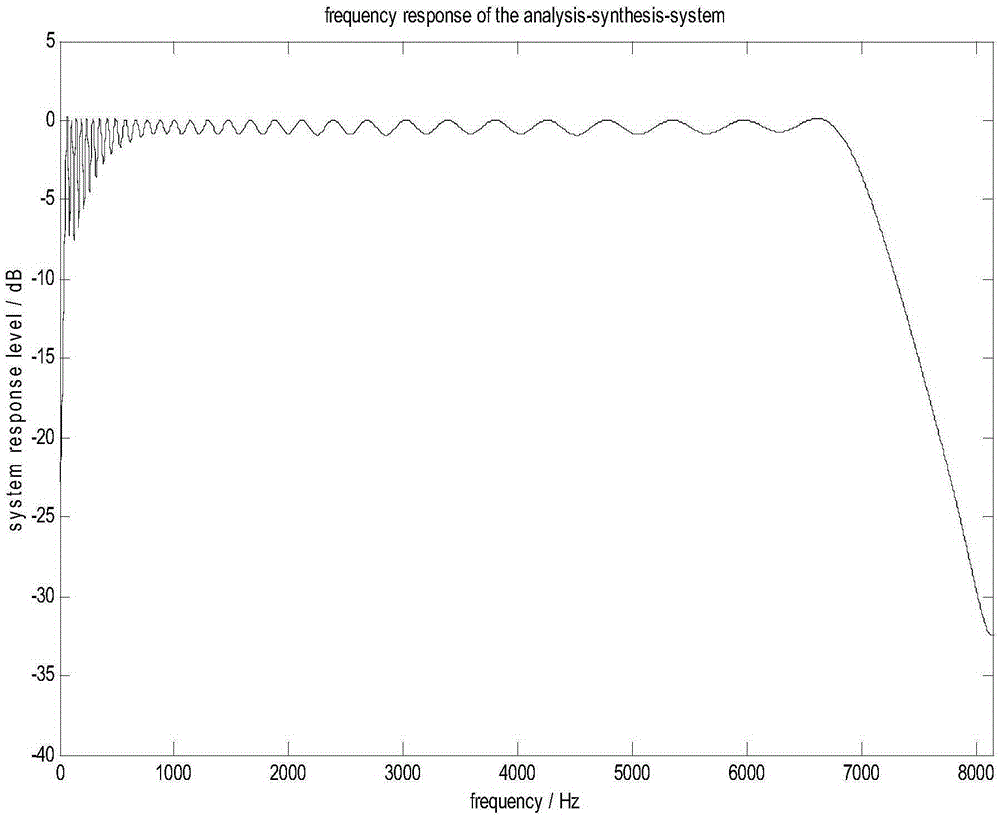Speech Enhancement and Frequency Response Compensation Fusion Method in Digital Hearing Aid
A technology of speech enhancement and frequency response compensation, applied in speech analysis, instruments, etc., can solve problems such as speech structure distortion, speech intelligibility and unsatisfactory comfort
- Summary
- Abstract
- Description
- Claims
- Application Information
AI Technical Summary
Problems solved by technology
Method used
Image
Examples
Embodiment Construction
[0024] Step 1: Preprocessing the noise-containing signal input by the digital hearing aid, firstly processing the input noise-containing signal into frames, and then calculating the frequency spectrum of each frame signal;
[0025] (1) The noise-containing signal y(t) input by the digital hearing aid, t represents time, in the process of analog-to-digital conversion, a sampling rate of 16kHz is adopted, and the output is expressed as a time-domain digital signal y(n), and n represents the serial number;
[0026] (2) The noise-containing signal y(n) is divided into frames through the Hamming window, taking 320 points or 20ms as a frame, and the frame shift is 160 points or 10ms, and can be divided into frames by using formula (1) to obtain the signal y of each frame (λ,n);
[0027] y ( λ , n ) = y ( n ) w ...
PUM
 Login to View More
Login to View More Abstract
Description
Claims
Application Information
 Login to View More
Login to View More - R&D
- Intellectual Property
- Life Sciences
- Materials
- Tech Scout
- Unparalleled Data Quality
- Higher Quality Content
- 60% Fewer Hallucinations
Browse by: Latest US Patents, China's latest patents, Technical Efficacy Thesaurus, Application Domain, Technology Topic, Popular Technical Reports.
© 2025 PatSnap. All rights reserved.Legal|Privacy policy|Modern Slavery Act Transparency Statement|Sitemap|About US| Contact US: help@patsnap.com



